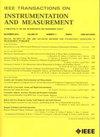A Multisensor Feature Fusion Attention Convolutional Neural Network for Complex Magnetic Leakage
IF 5.9
2区 工程技术
Q1 ENGINEERING, ELECTRICAL & ELECTRONIC
IEEE Transactions on Instrumentation and Measurement
Pub Date : 2024-11-08
DOI:10.1109/TIM.2024.3493872
引用次数: 0
Abstract
Among complex defects, small defects in oil and gas pipelines are easily submerged and difficult to detect. To improve the detection accuracy for small defects in complex magnetic flux leakage (MFL) signals, we propose a weak supervision method called multisensor feature fusion attention convolutional neural network (FACNN). First, an improved conditional adversarial generation network is presented, which introduces a supervised loss function at the analog signal level to reduce the number of parameter iterations for sample generation. Second, the feature extraction module uses the decoupled fully connected (DFC) attention mechanism and a convolutional neural network parallel structure to aggregate the features gathered at the center of the image and the features of the convolutional neural network, from which the small defect features can be fully extracted. Third, the feature fusion module uses the proposed loss function to guide the fusion of axial, radial, and circumferential signal feature maps, which enhances the effective propagation among small defect features. Finally, the experimental results show that the average detection accuracy of the proposed method for detecting small defects reaches 96.7%, which is 5.5% higher than the best detection accuracy of the existing methods.针对复杂磁泄漏的多传感器特征融合注意卷积神经网络
在复杂的缺陷中,油气管道中的小缺陷容易被淹没,难以检测。为了提高复杂漏磁通(MFL)信号中微小缺陷的检测精度,我们提出了一种称为多传感器特征融合注意卷积神经网络(FACNN)的弱监督方法。首先,提出了一种改进的条件对抗生成网络,它在模拟信号层面引入了监督损失函数,以减少样本生成的参数迭代次数。其次,特征提取模块采用解耦全连接(DFC)注意机制和卷积神经网络并行结构,将图像中心采集的特征和卷积神经网络的特征进行聚合,从中充分提取出小缺陷特征。第三,特征融合模块利用提出的损失函数指导轴向、径向和周向信号特征图的融合,增强了小缺陷特征之间的有效传播。最后,实验结果表明,所提出的小缺陷检测方法的平均检测准确率达到 96.7%,比现有方法的最佳检测准确率高出 5.5%。
本文章由计算机程序翻译,如有差异,请以英文原文为准。
求助全文
约1分钟内获得全文
求助全文
来源期刊

IEEE Transactions on Instrumentation and Measurement
工程技术-工程:电子与电气
CiteScore
9.00
自引率
23.20%
发文量
1294
审稿时长
3.9 months
期刊介绍:
Papers are sought that address innovative solutions to the development and use of electrical and electronic instruments and equipment to measure, monitor and/or record physical phenomena for the purpose of advancing measurement science, methods, functionality and applications. The scope of these papers may encompass: (1) theory, methodology, and practice of measurement; (2) design, development and evaluation of instrumentation and measurement systems and components used in generating, acquiring, conditioning and processing signals; (3) analysis, representation, display, and preservation of the information obtained from a set of measurements; and (4) scientific and technical support to establishment and maintenance of technical standards in the field of Instrumentation and Measurement.
 求助内容:
求助内容: 应助结果提醒方式:
应助结果提醒方式:


